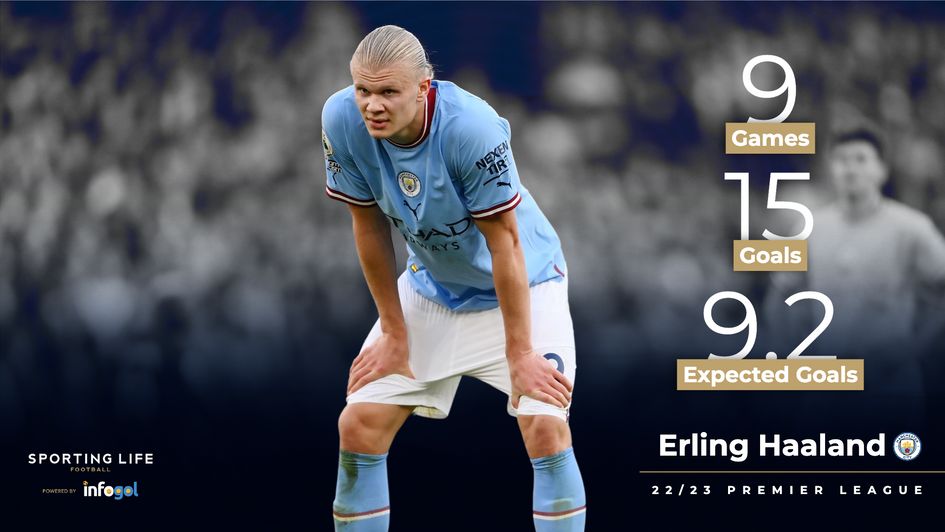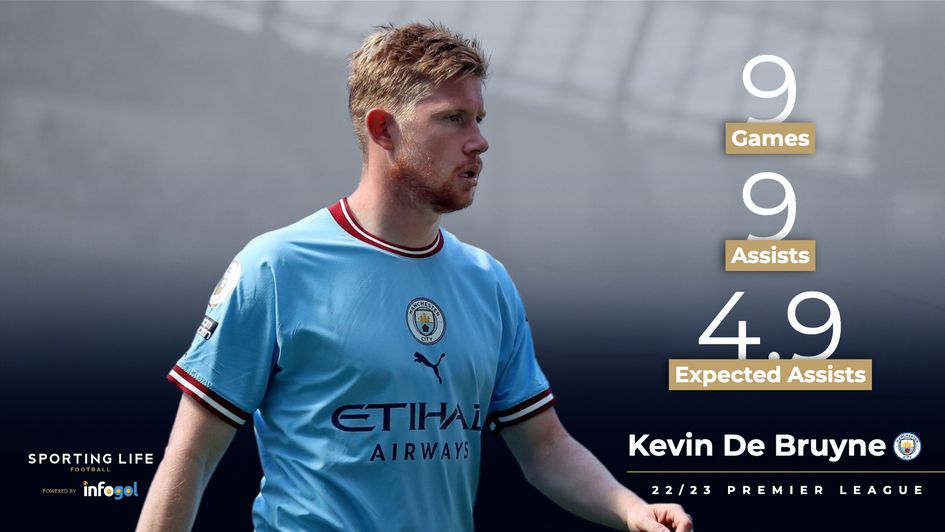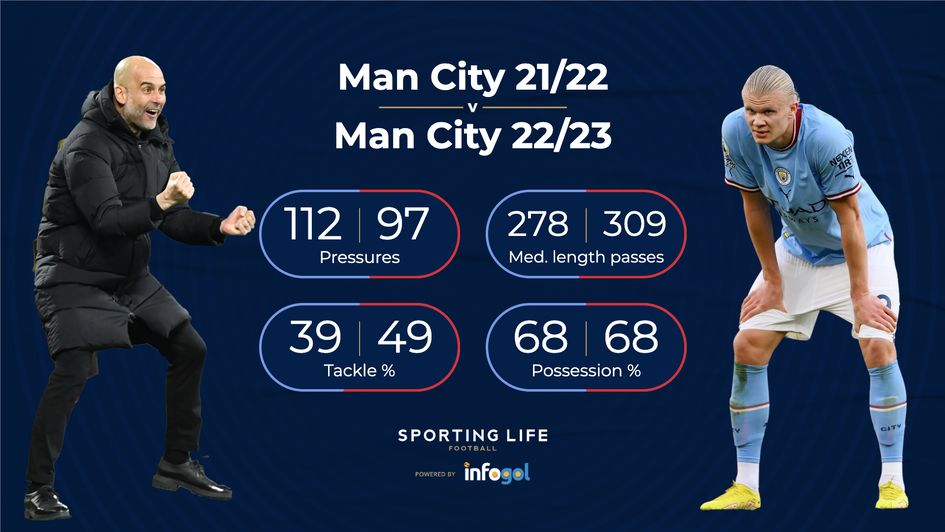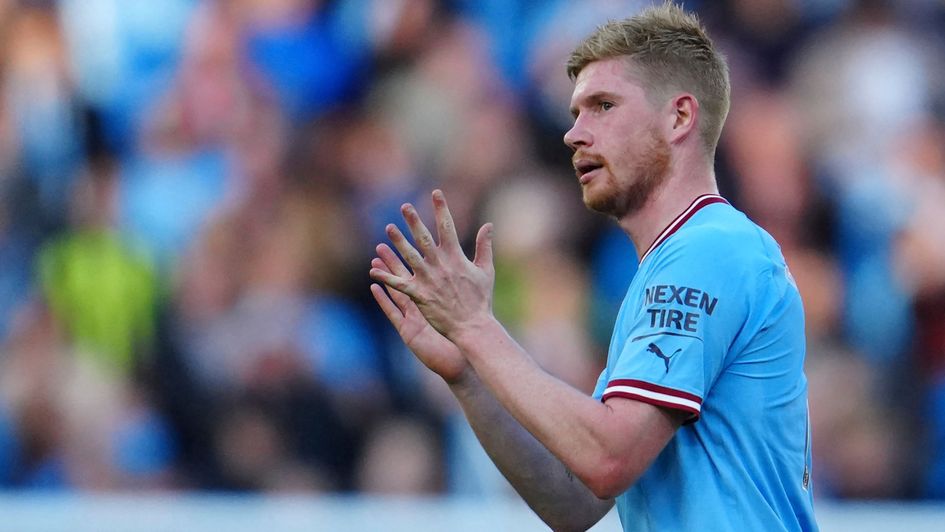Liverpool’s crisis unravelling at an ever-quickening pace, combined with the absurdity of Erling Haaland’s goalscoring record, has changed our perception of the Klopp-Guardiola rivalry beyond recognition.
There are few previews of Sunday’s game that focus on a tactical battle and the recent history of the fixture, not just because they aren’t exactly rivals at the moment - with Liverpool 13 points behind Manchester City in the Premier League table - but because Jurgen Klopp’s side are a tactical mess and Pep Guardiola’s don’t need to worry about the details anymore.
That’s the general perception of their start to the 2022/23 campaign, anyway.
Guardiola, once the genius who needed to tinker with every microscopic element of his team’s strategy, now presides over a system that runs so smoothly and so instinctively it no longer needs him.
He can simply watch on as his cheat code Haaland brings victories on autopilot, Man City completing the Premier League just as Liverpool fold in on themselves.
City's easy start being underestimated
Doom-mongers will argue this is a sign of the Premier League heading the same way as other European nations with one monopolising club at the top, but what is overlooked in this analysis is that Man City’s start to the season has been much easier than many have realised.
They have rarely been tested, and whenever difficult fixtures have come up City have shown a clear vulnerability. We can caveat every single one of theirs wins this season.
On the opening day they beat a hopelessly passive West Ham 2-0 in arguably their easiest game to date. Four of their other six wins have been against teams currently in the bottom six (and that includes Crystal Palace, who took a 2-0 lead), with the other two wins being against an ineptly-expansive Manchester United and Bournemouth at home.
In short, they have had very uncomplicated games yet still managed to draw twice and, on many occasions, appear oddly lacklustre until finally reaching the higher gears.
Hanging everything on Haaland

Haaland is the reason for City’s good results and their difficult moments.
His presence as a non-pressing forward is allowing opponents to counter-attack with a little bit more menace and his lack of movement during build-up play has stretched Man City’s lines a little, creating an occasional passivity and marked change of tactical direction.
Tellingly, Man City’s possession average is the same this season as last (68%) but their number of pressures per game is down from 111.9 to 97.1 according to FBRef. They are far from invulnerable.
Man City's midfield maestros
And yet they are considerably better than Liverpool, for one main reason: their central midfield three has been quietly putting in some of their most attuned and high-powered performances of the Guardiola era to date, stitching together those slightly sagging lines and giving Man City the platform to take advantage of Haaland’s prowess in the penalty box.
Rodri, Ilkay Gundogan, and Kevin De Bruyne have formed a particularly effective trio this season thanks to Guardiola’s reconfiguration of his full-backs.

The first iteration of his Man City team had De Bruyne and Bernardo Silva floating as number eights either side of Fernandinho, with the wingers coming infield as often as they hugged the touchline, but these days De Bruyne and Gundogan (or Silva) can sit a lot higher because Kyle Walker and Joao Cancelo spend so much time supporting Rodri.
This gives Man City a two or three-man base in central midfield to shield against counter-attacks, in turn allowing De Bruyne and Gundogan to venture much further forward, the former peeling wide to cross from attacking midfield positions and the latter joining the front line.
However, the elasticity within the system means three central midfielders are always in unison; tied by string to one another to create a choreographed shape of the sort Liverpool are currently unable.
Where Klopp’s midfielders scramble to help cover their full-backs in the wide areas, Guardiola’s are free to stay higher thanks to the narrow 2-3 shape created by those interior full-backs.
More direct in their build-up
This subtle change in the Man City midfield has helped ensure Haaland is not isolated from the rest of the team and has made them a little bit more direct.
Man City’s ‘medium’ length passes are up from 278.0 to 308.7 per game this season, per FBRef, and yet this increased directness has not translated to greater defensive vulnerability, something that might have been assumed of Guardiola considering the value he places on slow, controlled build-up.
Man City’s tackle percentage is up 38.9% to 49.4%, suggesting they are not leaving gaps between the lines on the counter as one might expect.

Rodri’s outstanding performances are surely a big reason for this, although another could simply be that opponents are sitting deeper and taking fewer risks on the counter now that Haaland is there: a lurking threat forcing teams to think twice about pushing Man City back.
This, in turn, has created a certain sluggishness in opponents that has allowed Rodri, Gundogan, and De Bruyne to take total control of matches.
Or, conversely, this is simply a reflection of the kind of opponents Man City have faced.
'Next few weeks will be the real test'
Liverpool will certainly be more attack-minded on Sunday, offering space in behind for De Bruyne to find Haaland and, most likely, once again looking woefully under-stocked in midfield against such strong opposition.
But beyond this weekend’s game, Man City face Brighton (h), Leicester City (a), Fulham (h), Chelsea (h), and Brentford (h) before the World Cup break, while the second half of the season contains seven of their 10 matches against the rest of the ‘Big Six’.
The next few weeks will be the real test of just how big a gap there is between Man City’s midfield and Liverpool’s.
More teams will test them in the transition like Newcastle did; more teams will squeeze the central column like Aston Villa managed; and eventually opponents will begin to work out how and where the anachronistic Haaland disrupts the flow of a Man City team transitioning into something we haven’t seen before.
It would be naïve to assume such a radical shift will come without any hiccups.








